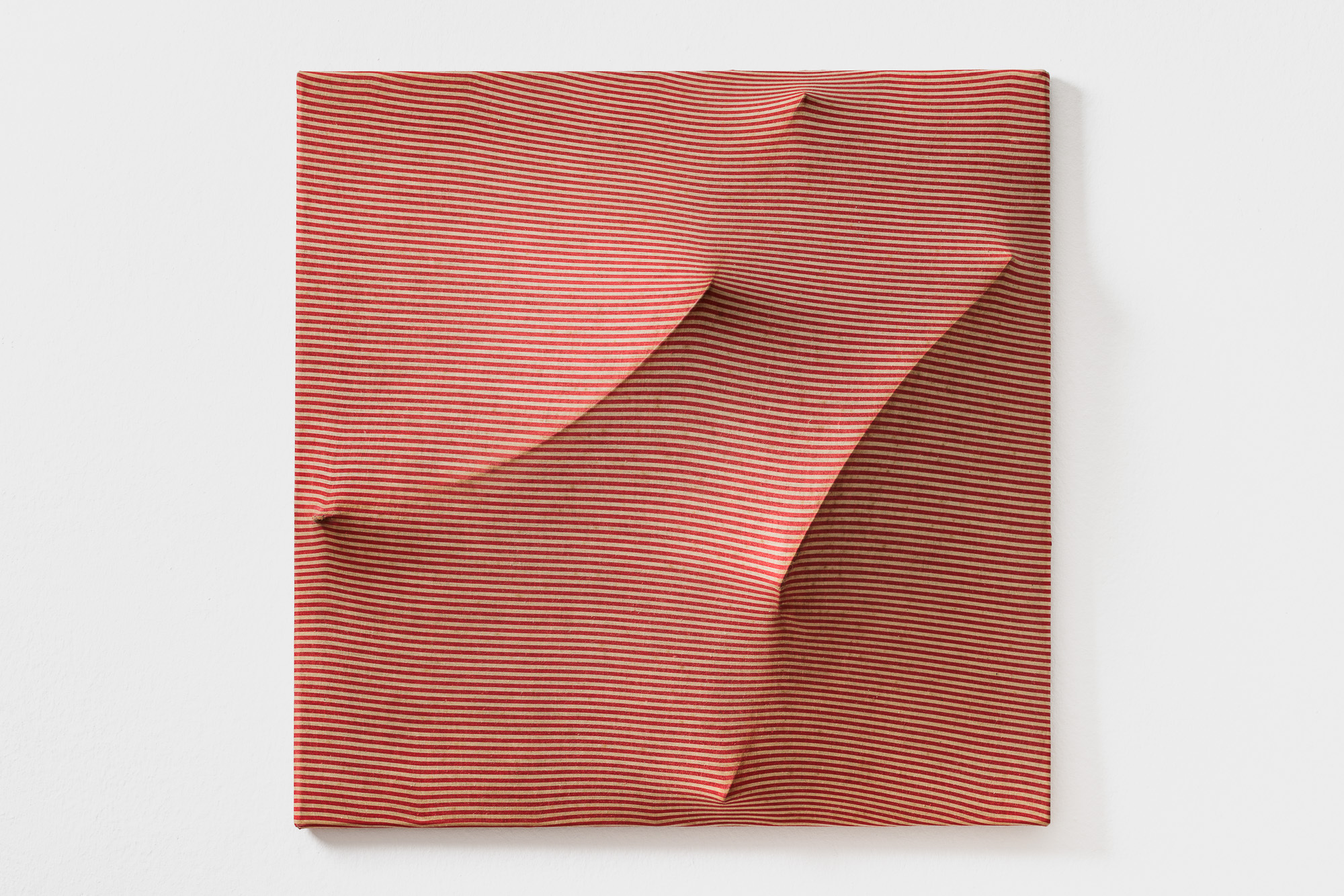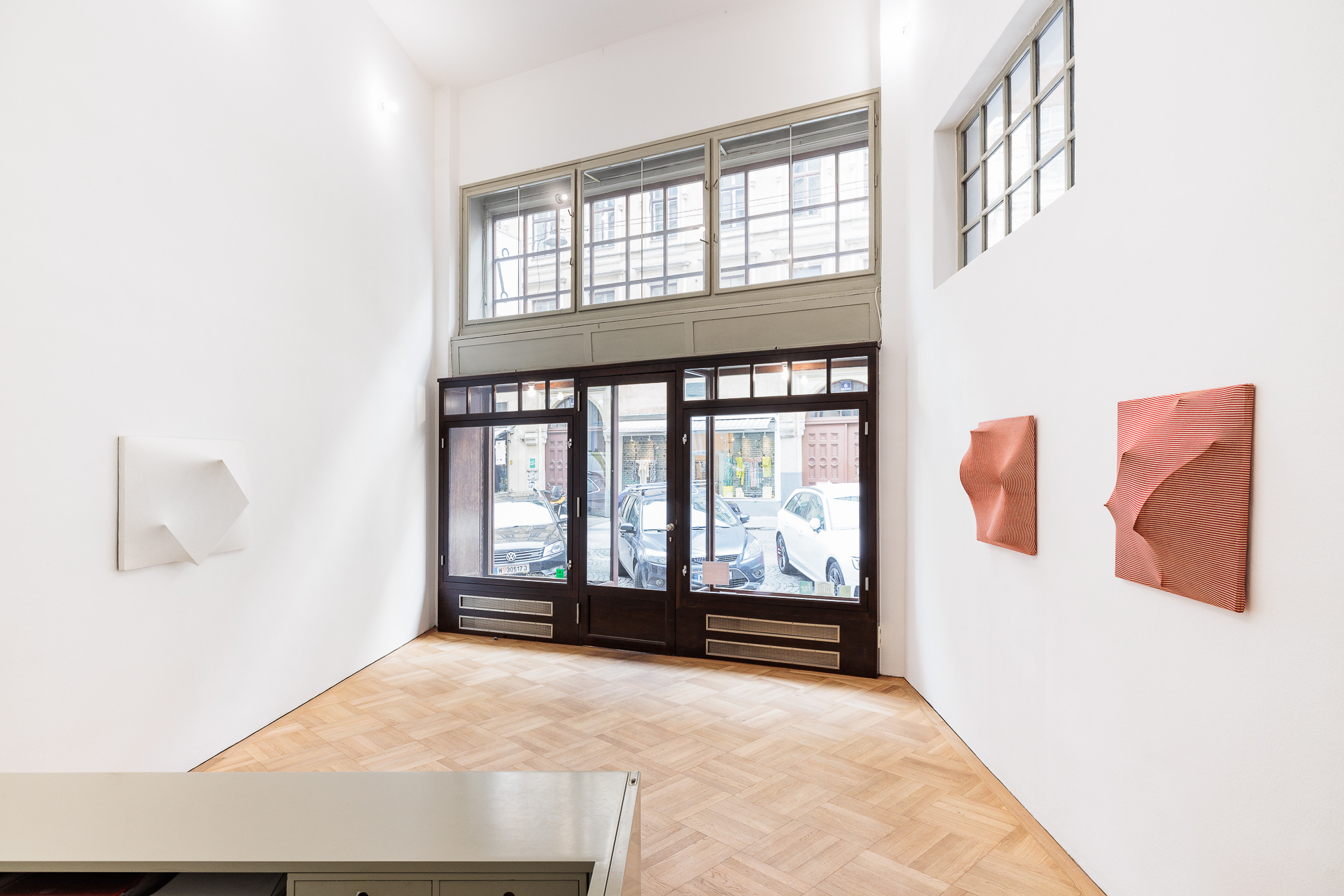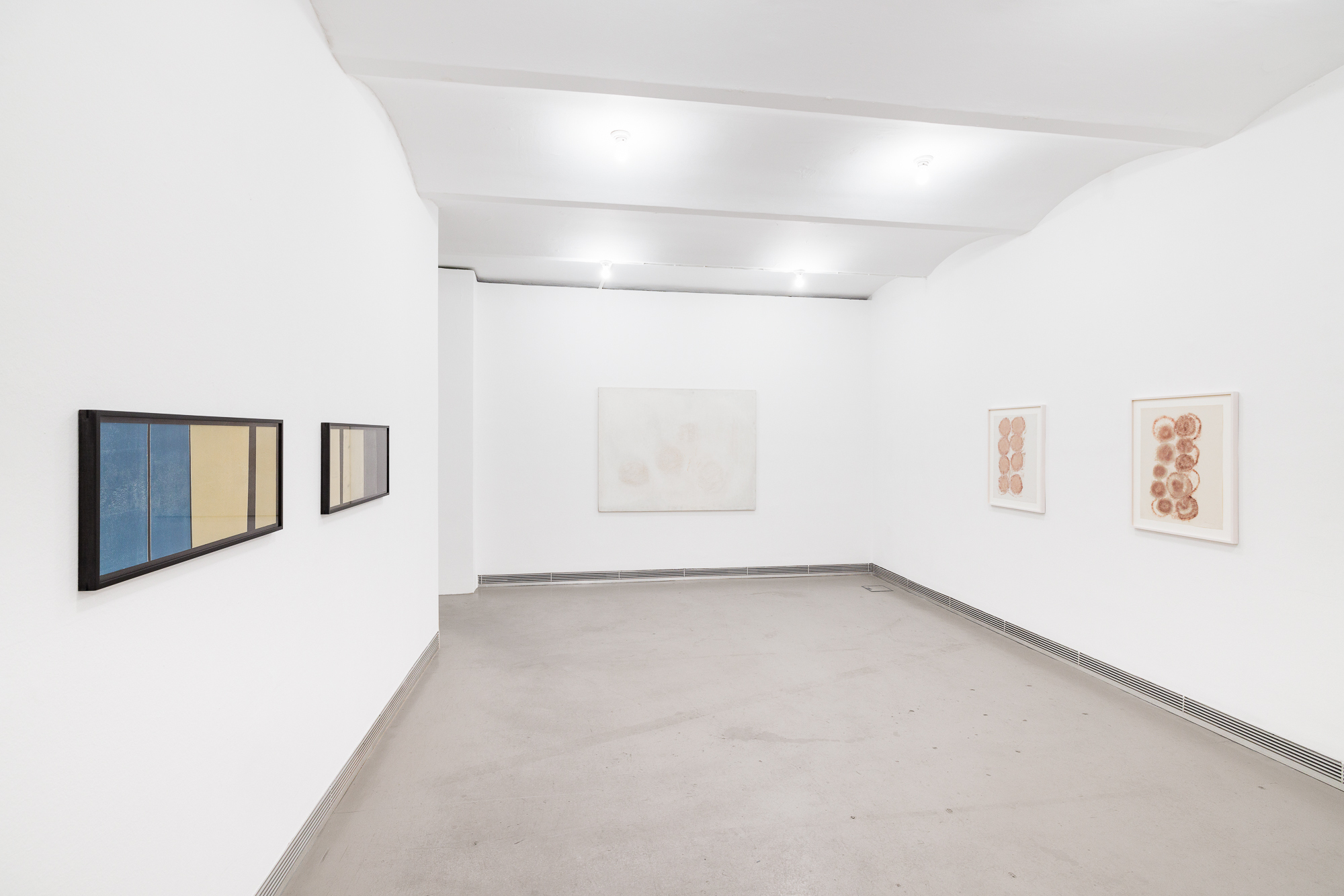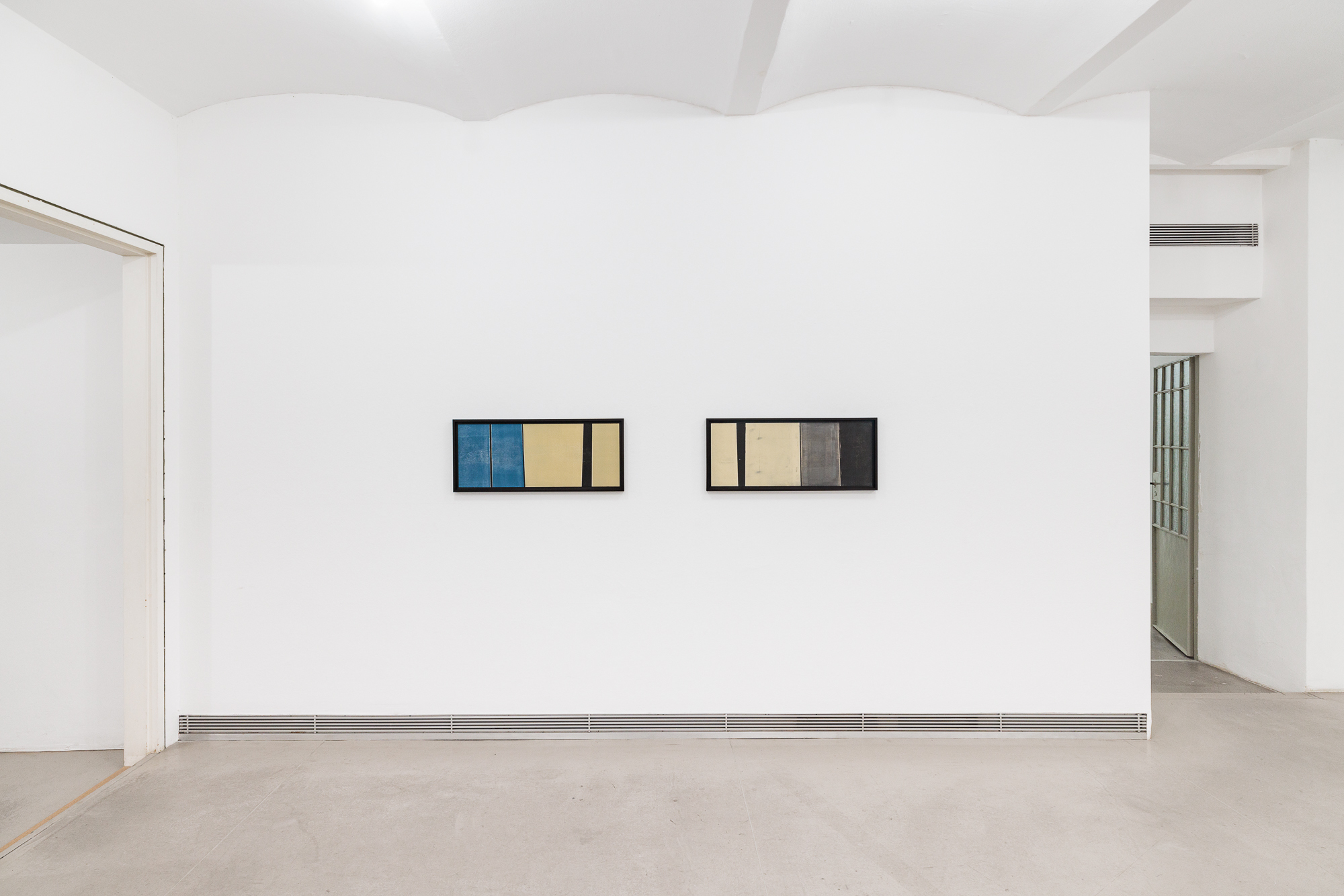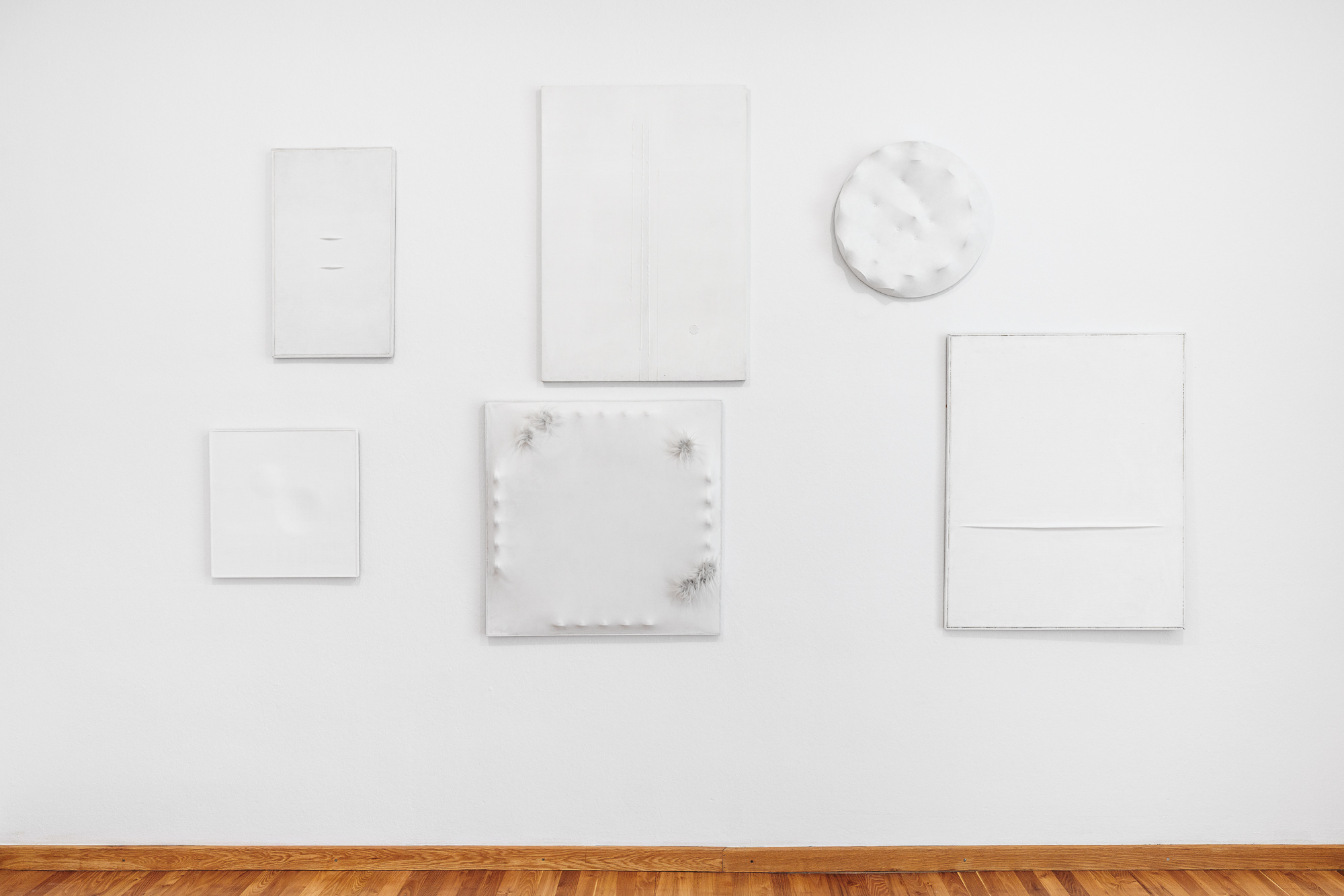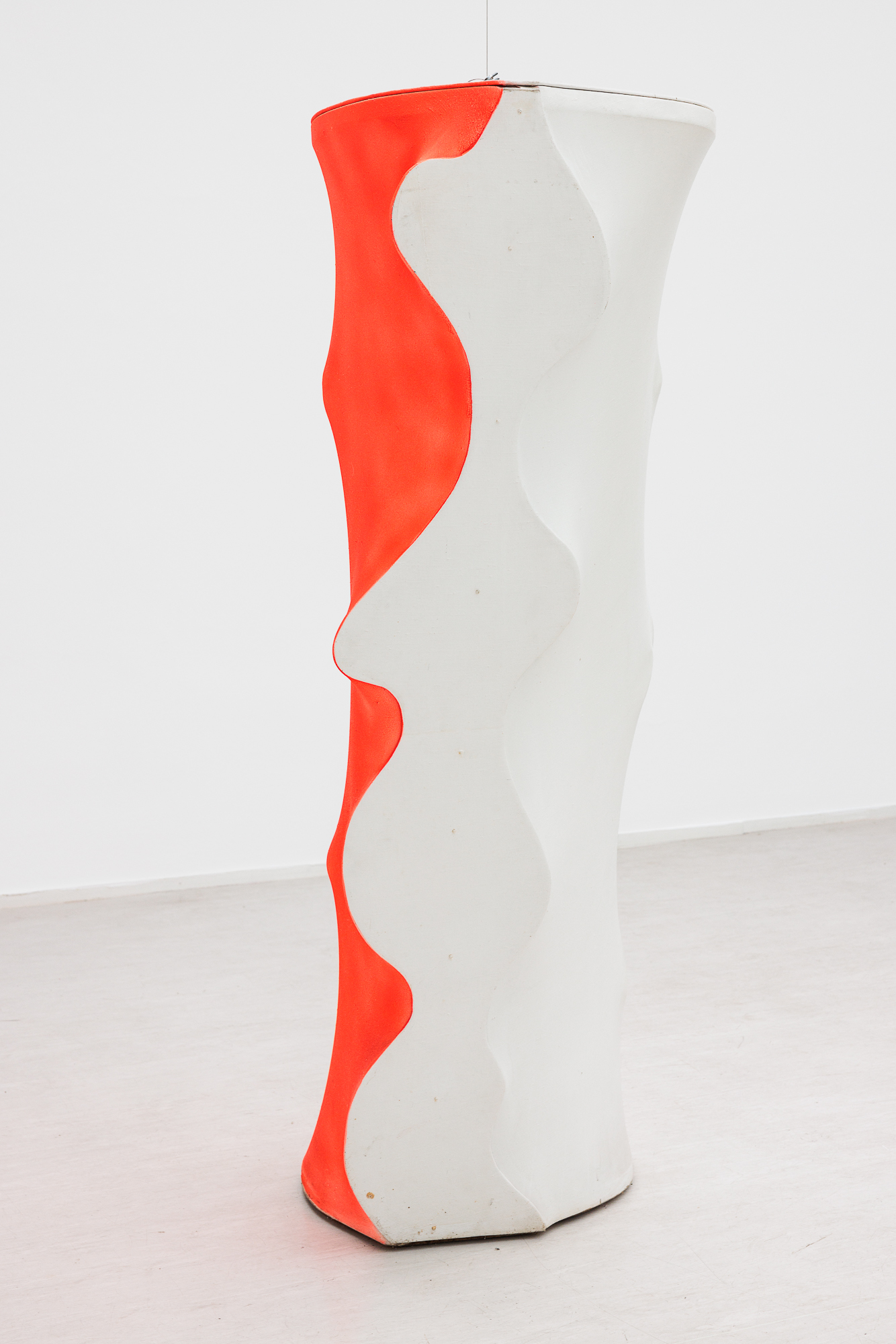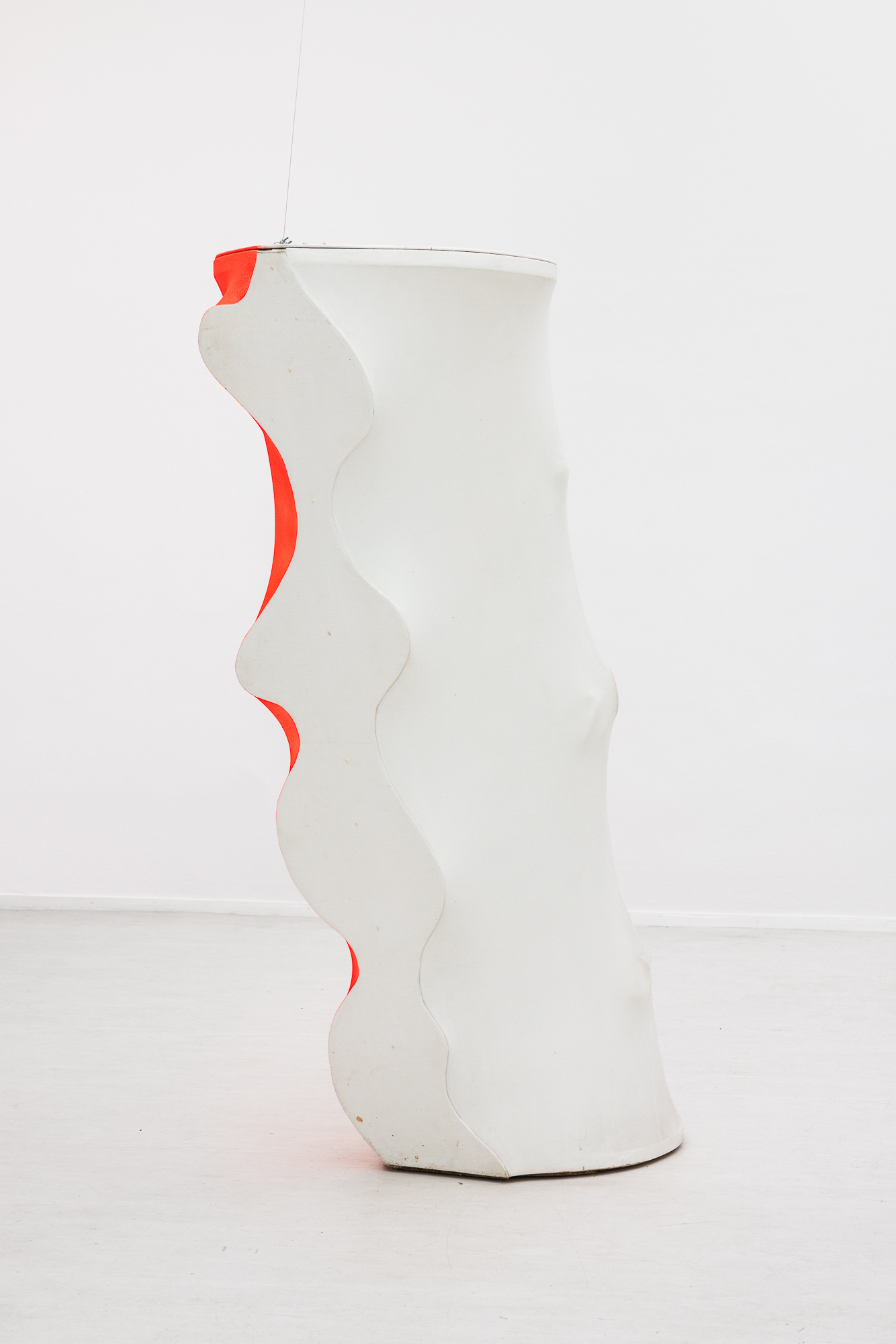—
Erwin Thorn
approaching space – androgynous, approaching space – meta-a-morphosis
The plurality of approach[1] towards space is an essential theme in Erwin Thorn’s work – the behavior of the works in space, their relationship to the space surrounding it, but also the behavior of the beholders towards them. His sculptural pictorial corpora demand positioning in both a literal and figurative sense, because for Thorn, space was always a social sphere. The word “restrained” can also be applied here as an adjective: Thorn’s works assert an immediate presence without being intrusive. They restrict themselves to a minimum of means of expression and, precisely in their reduction, develop a sensual, abstract intensity that dynamizes space as a reference magnitude and shifts the relationship between center and periphery.
Born in Vienna in 1930, Erwin Thorn survived the Nazi era in Palestine. In the 1950s he studied at the University of Applied Arts in Vienna, took part in international exhibitions with the protagonists of the ZERO movement at the invitation of Lucio Fontana, and in 1969 and 1972 had solo presentations at the Galerie nächst St. Stephan, one of the most important addresses of Austrian art discourse at the time, as well as at Grita Insam’s Modern Art Gallery in 1979. With his puristic pictorial language, the deconstruction of the traditional image medium, and its biomorphic expansion into space, he clearly positioned himself in the European postwar avant-garde. And yet there are constants running through this work that differ from the international tendencies to which Thorn’s work can be ostensibly ascribed. The analytical coalesces with the playful, the abstract form is charged with socially critical and political connotations, and the conceptual leaves room for subtle irony. For Thorn, the color white means metaphysical clarity, but also marks the new beginning of an art, liberated from the historical canon, which develops its own visual grammar and poetic language. Concave and convex curvatures on discs and pictorial objects or delicate, colored circular shapes in early paintings and monotypes appear like intimate body fragments, just as there is a pronounced relationship to the corporeal throughout his oeuvre.
The transition from the ZERO aesthetic, which still characterizes Thorn’s works from the 1960s, to post-conceptual works that reflect space as architecture takes place in a gradual process that activates a visual-spatial vocabulary that has developed over the years. Modulations of light, few color impulses, the interaction of the autonomous image surface with the space, the shifting to amorphous form and sensual-tactile materials have been part of this artistic language from the beginning.
White images are loaded with th"e productive power of negation and the narratives of nothingness. Structural images encounter three-dimensional objects with pictorial relief. Frames are deconstructed so that the canvas can extend into the space. Its surface becomes a breathing membrane as the occurrence moves from the image to the edge. Or the work detaches itself from the wall and becomes a floating disc. Later, Thorn frees it completely from its status as an object, dissolving its boundaries into architecture. Cancan (1968/69), made of black sheet iron, sits enthroned like a baldachin above the door frame. Untitled (1979), consisting of canvas with faux fur, nestles in the corner like a niche for a figure of a saint. For Thorn, the conservative image of man’s likeness to God as an ideological superstructure of the pursuit of prestige and power dominated the social structure up to the present. He therefore allowed the pedestal to flow amorphously into the space. He also avoided anything monumental because he was suspicious of the exaggeration of the artist’s subject. Thorn satirized hierarchies and power imbalances in patriarchy, as well as in art and society in classical, ancient columns that seem to be melting.
Experiencing the work in the situation-specific contemplation, however, remained a constant in this extraordinary oeuvre, which freed art from the conventions of the day to lend it timeless resonance. In a note that underlines Thorn’s affinity for linguistics and poetry, he adds two additional terms to the “behavior towards space”: androgynous and metamorphosis, the latter broken down into syllables and given an additional “a”: meta - a - morphosis. The transformation combines with the amorphous, the meta-level becomes part of the concept, and the space in between emphasizes the potential of that which evades clarity. In this sense, Thorn’s works situate themselves beyond classical dichotomies in a sphere of the fluid and transitive. They appropriate the space and present themselves as figures whose condition is constantly in a state of flux. Plural in their appearance, they enable imaginative access to the experiential space they create.
Vanessa Joan Müller
[1] The German word “Verhalten” has various meanings and connotations. In his writings, Thorn plays with this plurality of meaning. The term can be translated as attitude, behavior or relation. It is also an adjective meaning “restrained”.
Biography
1930 - Vienna - 2012
Selected Solo Exhibitions
2024
approaching space - androgynous, approaching space - meta-a-morphosis, Georg Kargl Fine Arts, Vienna
2010
Apropos Blei, in Anbetracht der Wörter, die Beredsamkeit der Folie, Georg Kargl Permanent, Vienna
2008
Erwin Thon, Georg Kargl Box, Vienna
1979
Arbeiten 1959-1979 und work in progress - Dokumentation, Modern Art Galerie, Vienna
1972
Spiele Spielen, Galerie nächst St. Stephan, Vienna
1971
WEISS, Museum des 20. Jahrhunderts, Vienna
1970
Galerie im Taxispalais, Innsbruck
1969
Galerie nächst St. Stephan, Vienna
1967
Österreichisches Kulturforum, Rome
1964
Galerie Wulfengasse 14, Klagenfurt
Selected Group Exhibitions
2025
TERRA INCOGNITA - Kunst-Expedition in ein unbekanntes Nachbarland. Tschechoslowakische Kunst zwischen 1948 und 1989 im Dialog mit der Sammlung Liaunig, Musem Liaunig, Neuhaus
2024
Selection – Highlights from the collection, Neue Galerie Graz, Universalmuseum Joanneum, Graz
Blind Date - Die Sammlung Maximilian und Agathe Weishaupt im Dialog mit der Sammlung Liaunig, Museum Liaunig, Neuhaus
Pop Art, The Bright Side of Life, Albertina Klosterneuburg, Klosterneuburg
From Fibre to Form, Kunthaus Dahlem, Berlin
2023
Picture This! The Belvedere Collection from Cranach to EXPORT, Belvedere, Vienna
2022
Lost in Space, Raum, Ding und Figur – Entwicklungen innerhalb der Skulptur seit 1945, Museum Liaunig, Neuhaus/Suha
2021
Avantgarde und Gegenwart. Die Sammlung Belvedere von Lassnig bis Knebl, Belvedere 21, Vienna
2020
The Beginning. Kunst in Österreich 1945 - 1980, Albertina Modern, Vienna
2019
Alfred Schmeller. Das Museum als Unruheherd, mumok, Vienna
2018
CONCENTRATION - a tribute, Gesellschaft für projektive Ästhetik, Georg Kargl, Vienna
Umrahmung schräg gekippt. Sammlung Liaunig in Bewegung, Museum Liaunig, Neuhaus
Reduction, Gesellschaft für Projektive Ästhetik, Georg Kargl, Vienna
2017
Ästhetik der Veränderung. 150 Jahre Universität für angewandte Kunst Wien, MAK, Vienna
European Abstraction from the 1960’s & 1970’s, Stellan Holm Gallery, New York
2016
Carol Bove meets ZERO, Galerie Koch, Hannover
2015
Zero. Positionen, Galerie Koch, Hannover
2014
Impulse, Reason, Sense, Conflict, CIFO – Cisneros Fontanals Art Foundation, Miami
Texte in der Kunst, Georg Kargl Fine Arts, Vienna
2013
Zero Avantgards 1965 – 2013, Galleria Christian Stein, Milan
2012
1964, Georg Kargl Fine Arts, Vienna
2010
High Ideals & Crazy Dreams-Groupshow, curated by Gerwald Rockenschaub, Galerie Vera Munro, Hamburg
Personal Structures. Time – Space – Existence, Künstlerhaus Palais Thun und Taxis, Bregenz
Personal Structures. Time – Space – Existence, Georg Kargl Fine Arts, Vienna
Fine Line, Georg Kargl Fine Arts, Vienna
2009
Feedbackstage, Georg Kargl Fine Arts, Vienna
Feedbackstage, Galerie Thomas Schulte, Berlin
2001
Farbenlust und Formgedanken. Abstrakte Wege in Österreich 1900-2000, Heiligenkreuzerhof, Vienna
2000
Farbenlust und Formgedanke. Abstrakte Wege in Österreich 1900-2000, Frauenbad, Baden bei Wien
1996
Die 60er Jahre oder als alles möglich wurde. Kunst und Kultur in Österreich 1960-1970, Schloß Herberstein, St. Johann bei Herberstein
1984
1984 - Orwell und die Gegenwart, Museum des 20. Jahrhunderts, Vienna
1971
Aquarelle - Druckgraphik - Handzeichungngen - Plastik, Galerie Krinzinger, Bregenz
1970
Nebenprodukte, Galerie nächst St. Stephan, Vienna
Österreichische Kunst 1979, Schloß Eggenberg, Graz
1969
Hommage an das Schweigen, Tiroler Kunstpavillon, Innsbruck
Surrealismus ohne Surrealisten - Künstler ohne Kunst, Galerie nächst St. Stephan, Vienna
Surrealismus ohne Surrealisten - Künstler ohne Kunst, Galerie im Taxispalais, Innsbruck
1968
Werke der III. Internationale Malerwoche, Neue Galerie Joanneum, Graz
Neue Dimensionen der Plastik in Österreich, Galerie Taxispalais, Innsbruck
Plastiken und Objekte, Museum des 20. Jahrhunderts, Vienna
Symposium, Retzhof
1966
Zero avantgarde 1966, Galleria associazione Zen, Brescia
Zero avantgarde 1966, Il Segno, Rome
Konfrontation 66, Galerie Heide Hildebrand, Klagenfurt
1965
Bischoffshausen, Hartlauer, Prantl, Thorn, Forum Stadtpark, Graz
Zero avantgarde 1965, Atelier di Fontana, Milan
Zero avantgarde 1965, Galleria del Cavallino, Venice
Zero avantgarde 1965, Galleria il Punto, Turin
Aspekten van een nieuwe Konseptiez, Galerie 20, Arnhem
Biennale nova tendencija III, Gallery of Contemporary Art, Museum of Arts and Crafts, Zagreb
1964
Biennale Art Sacre, Paris
1962
Symposion Europäischer Bildhauer – Kleinplastiken, Galerie im Griechenbeisl, Vienna
1960
International Biennal of Prints, Cincinnati Art Museum, Cincinnati (OH)
Sommerausstellung, Galerie im Griechenbeisl, Vienna
Galerie Junge Generation, Vienna
Inquiry
Please leave your message below.

